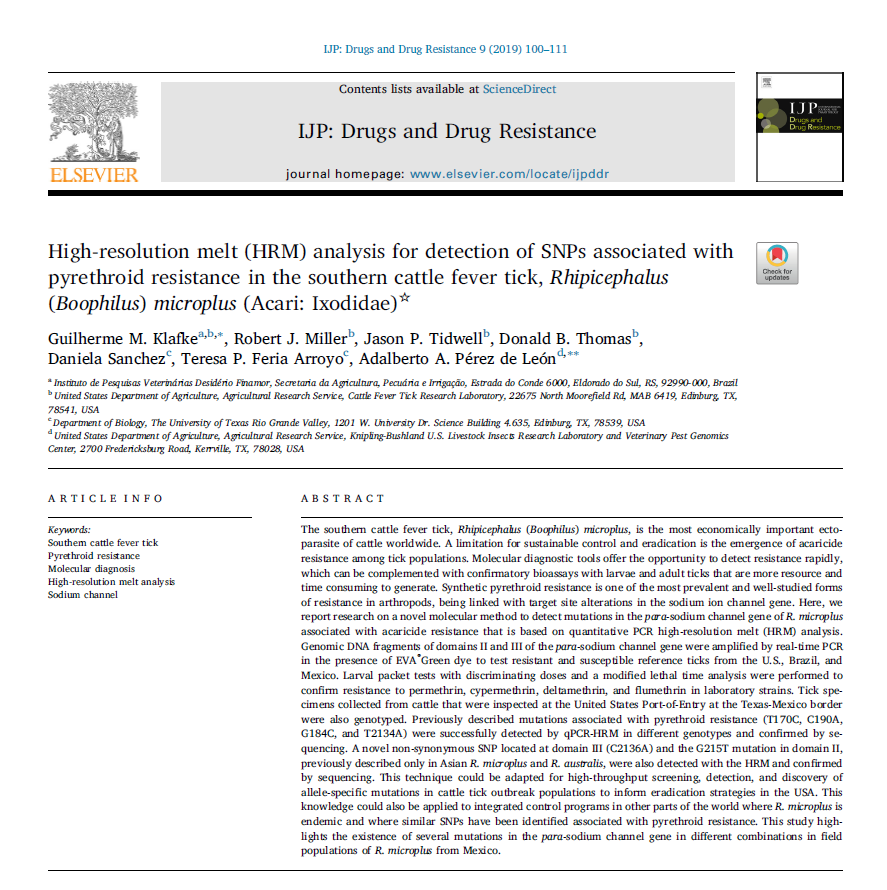
- April 05, 2019
High-resolution melt (HRM) analysis for detection of SNPs associated with pyrethroid resistance in the southern cattle fever tick, Rhipicephalus (Boophilus) microplus (Acari: Ixodidae)
Guilherme M. Klafke, Robert J. Miller, Jason P. Tidwell, Donald B. Thomas, Daniela Sanchez, Teresa P. Feria Arroyo, Adalberto A. Pérez de León | Instituto de Pesquisas Veterinárias Desidério Finamor, Secretaria da Agricultura, Pecuária e Irrigação, Estrada do Conde 6000, Eldorado do Sul, RS, 92990-000, Brazil, United States Department of Agriculture, Agricultural Research Service, Cattle Fever Tick Research Laboratory, 22675 North Moorefield Rd, MAB 6419, Edinburg, TX, 78541, USA, Department of Biology, The University of Texas Rio Grande Valley, 1201 W. University Dr. Science Building 4.635, Edinburg, TX, 78539, USA, United States Department of Agriculture, Agricultural Research Service, Knipling-Bushland U.S. Livestock Insects Research Laboratory and Veterinary Pest Genomics Center, 2700 Fredericksburg Road, Kerrville, TX, 78028, USA | 2019 | IJP: Drugs and Drug Resistance; vol. 9, pp.100-111
Southern cattle fever tick is one the most economically important ectoparasites of livestock in endemic areas. Issues with resistance to classes of acaricides, including pyrethroids, is arising in the cattle industry. In this study, a high resolution melting (HRM) assay was developed to detect multiple mutations in the para-sodium channel gene associated with pyrethroid resistance. The HRM assay designed on the MIC Real-Time Cycler was successful in determining the presence of previously documented pyrethroid class resistant mutations. This assay could be used to refine integrated tick management strategies by adapting the selection of acaricides based on genetic resistance observed in real time.
Read More